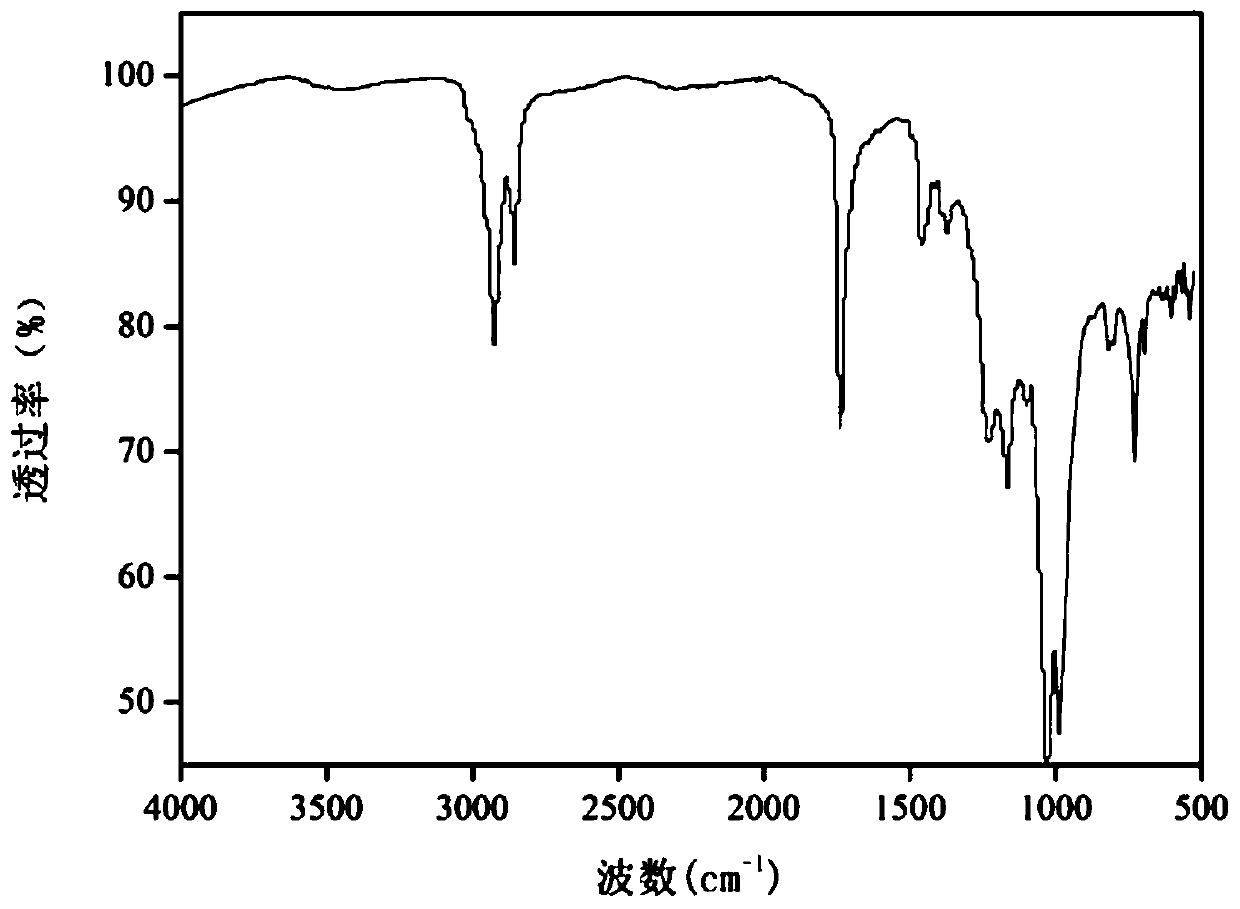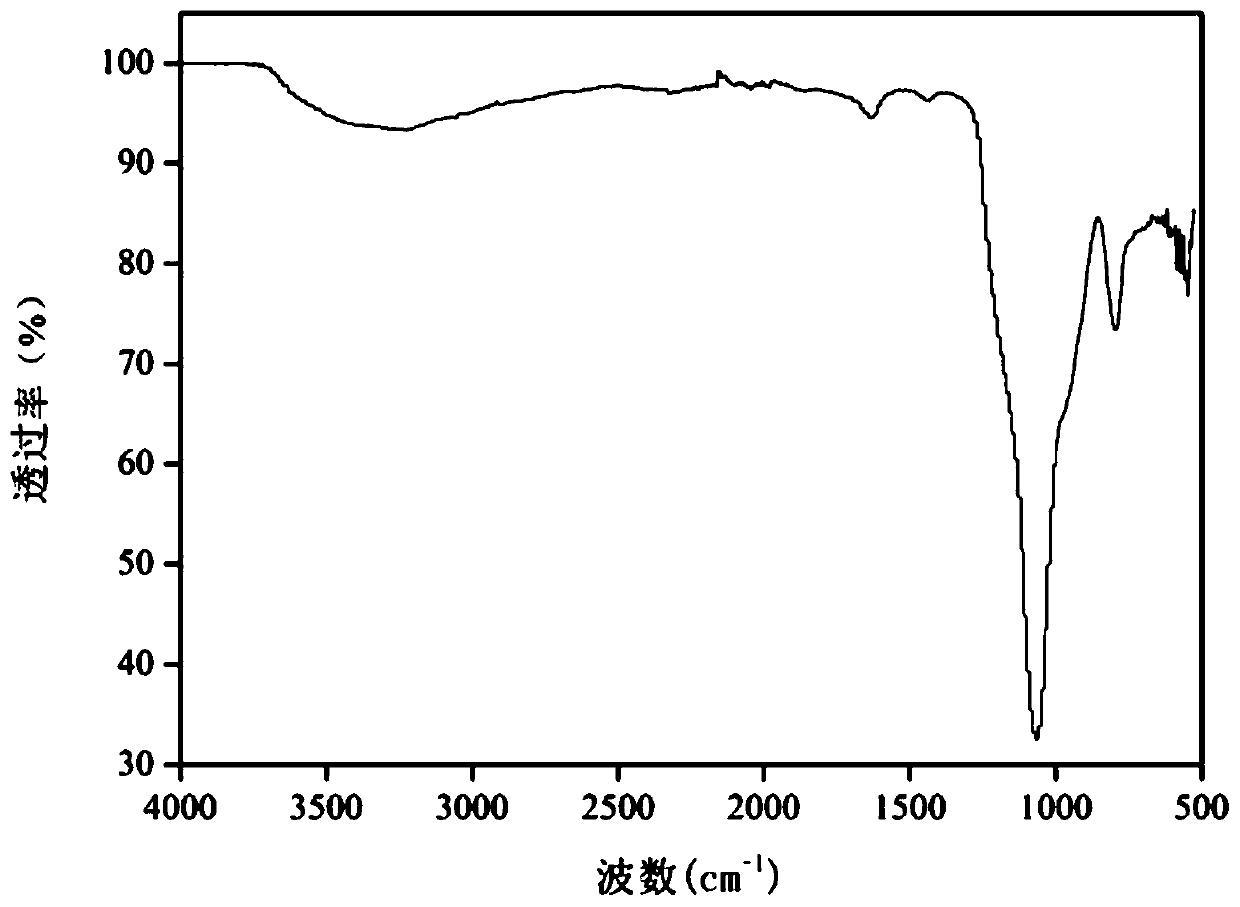Organic silicon modified vegetable oil-based polyol, preparation method thereof and application thereof
A vegetable oil-based, organosilicon technology, applied in the field of polyurethane foam, can solve the problems of increasing production cost and reducing the physical properties of polyurethane foam, and achieves the effects of high thermal stability, strong reactivity and good mechanical properties
- Summary
- Abstract
- Description
- Claims
- Application Information
AI Technical Summary
Problems solved by technology
Method used
Image
Examples
preparation example Construction
[0040] The preparation formula and performance test results of the polyurethane foam are shown in Table 1 and Table 2. The main raw materials are compound polyols and isocyanates.
[0041] The specific operation is as follows: Mix the compound polyol and the auxiliary under the condition of rapid stirring to make it uniform, and then stir with the isocyanate under the condition of rapid stirring for 20~30s, the rotation speed is 2000~2500r / min, pour it into the mold, and mature it. 12h.
[0042] The isocyanate is polymethyl polyphenyl polyisocyanate (PAPI), and the trade name is PM-200 of Yantai Wanhua Polyurethane Co., Ltd.
[0043] In the present invention, silicon dioxide is coated with ammonium molybdate to form a silicon dioxide microcapsule flame retardant to form a silicon-nitrogen-molybdenum flame retardant system. At the same time, using tung oil as raw material, through transesterification reaction, epoxidation reaction and ring-opening reaction, a silicone-modifie...
Embodiment 1
[0046] Epoxidized eleostearic acid monoglyceride and N-(β-aminoethyl)-γ-aminopropylmethyldimethoxysilane in molar ratio n 环氧基团 : n N-(β-氨乙基)-γ-氨丙基甲基二甲氧基硅烷 =7:3 mixing, heating to 70°C, and reacting for 2 h under nitrogen protection to obtain organosilicon modified tung oil-based polyol. According to the formula shown in Table 1, 100 parts by mass of polyether polyol PPG4110 and additives are mixed uniformly, and then stirred with 118 parts by mass of isocyanate for 20-30 s at a rotational speed of 2000-2500 r / min, poured into a mold, and heated at 60° C. aged for 12h in a blast drying oven.
Embodiment 2
[0048] Epoxidized eleostearic acid monoglyceride and N-(β-aminoethyl)-γ-aminopropylmethyldimethoxysilane in molar ratio n 环氧基团 : n N-(β-氨乙基)-γ-氨丙基甲基二甲氧基硅烷 = 7:3 mixing, heating to 70°C, and reacting for 2 h under nitrogen protection to obtain organosilicon-modified tung oil-based polyol. According to the formula shown in Table 1, firstly combine 25 parts by mass of N-(β-aminoethyl)-γ-aminopropylmethyldimethoxysilane-modified tung oil-based polyol with 75 parts by mass of polyether polyol Alcohol PPG4110 and additives are mixed evenly, and then stirred with 118 parts by mass of isocyanate for 20 to 30 s at a speed of 2000 to 2500 r / min, poured into a mold, and matured in a blast drying oven at 60°C for 12 hours.
PUM
| Property | Measurement | Unit |
|---|---|---|
| particle size | aaaaa | aaaaa |
| compressive strength | aaaaa | aaaaa |
| hydroxyl value | aaaaa | aaaaa |
Abstract
Description
Claims
Application Information
 Login to View More
Login to View More - R&D
- Intellectual Property
- Life Sciences
- Materials
- Tech Scout
- Unparalleled Data Quality
- Higher Quality Content
- 60% Fewer Hallucinations
Browse by: Latest US Patents, China's latest patents, Technical Efficacy Thesaurus, Application Domain, Technology Topic, Popular Technical Reports.
© 2025 PatSnap. All rights reserved.Legal|Privacy policy|Modern Slavery Act Transparency Statement|Sitemap|About US| Contact US: help@patsnap.com



